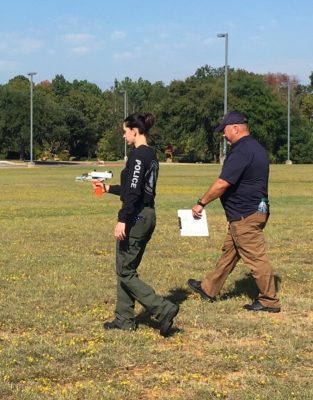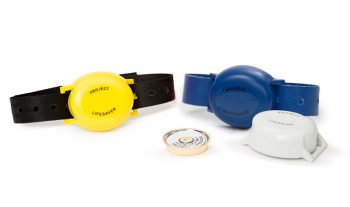ETAA Partners with Gregg, Harrison, Marion, Panola, Rusk, and Upshur Counties
People With Dementia Wander
Of the 242,238 people in Gregg, Harrison, Marion, Panola, Rusk, and Upshur Counties, an average of 19.8 percent are 65 years and older. One in 9 of them have Alzheimer’s disease or a related dementia. Of those, approximately 70 to 80 percent will develop the tendency to wander. Because wandering is such a common symptom of Alzheimer’s disease, anyone diagnosed is at risk of wandering at any time. It is best to prevent the problem before it occurs since statistics show the wandering person’s chance of survival drops to 50 percent, if not located within 24 hours.
How Project Lifesaver Works
Project Lifesaver combines “tried and true” radio technology with rescue teams from the local community, including law enforcement and public safety officials. Together, they create an effective life-saving system that has proven itself, time and time again, to be reliable, responsive, practical, and affordable.
Those who are part of the Project Lifesaver Program wear a personalized wristband that emits a tracking signal. When caregivers notify law enforcement officials that the person is missing, a search and rescue team responds to the wanderer’s area and starts searching with the mobile locator tracking system.
Search times have been reduced from hours and days to only minutes. The Project Lifesaver wristband is much more than a passive ID bracelet.
It is a one-ounce battery operated, waterproof wrist transmitter emitting an automatic tracking signal every second, 24 hours a day. The signal is tracked on the ground or in the air over several miles. Since each wristband has a unique radio frequency, the Project Lifesaver search team is able to positively locate and identify the person who has wandered away from home.
Project Lifesaver Benefits
- Over 4,000 rescued to date internationally
- Average location time is 30 minutes
- No injuries and no deaths to date
- Average number of officers used in Project Lifesaver searches is 2
- Locates day or night, inside or outside, up to one mile on the ground, more distance from the air
- Affordable fee, with scholarships available
Project Lifesaver belongs to the citizens of Gregg, Harrison, Marion, Panola, Rusk, and Upshur Counties. It is provided through a partnership between East Texas Alzheimer’s Alliance, the Gregg County, Harrison County, Marion County, Panola, Rusk, and Upshur County Sheriff’s offices, and the City of Longview, Marshall, Hallsville, Jefferson, and Gilmer Police Departments. These groups join in developing and strengthening all aspects of the program, including rescues, fundraising and education within the communities.
If interested in learning more on how to get a wristband for your loved one in Gregg, Harrison, Marion, Upshur, Panola & Rusk Counties, contact ETAA at 903-230-8001.
The Alzheimer’s Alliance of Smith County manages Project Lifesaver for Smith County, Texas. In addition, the Alzheimer’s Alliance of Tri-State Area manages Project Lifesaver for Bowie & Cass Counties in Texas and Miller County, Arkansas. Please reach out to either of these agencies if you live in one of these counties.
Alzheimer’s Alliance of Smith County – 903-509-3828
Alzheimer’s Alliance Tri-State Area – 903-223-8021
The training in Gregg, Harrison & Marion counties was partially funded by Health and Human Services Commission

Tips to Prevent Wandering
- Do not leave a person with dementia unsupervised.
- Ensure the person is well-fed, well-hydrated and using the bathroom regularly. Some people wander in an effort to fill these needs. Setting a schedule can help maintain these needs.
- Look for changes in behavior patterns.
- Consult with a physician to see if medications can help. Individuals who wander as a result of delusions or hallucinations may require medications.
- Set a daily routine that includes recreational activities – music therapy, physical exercise or movies – to lesson boredom, lack of stimulation or lack of socialization that prompts wandering.
- Reduce environmental stimuli like loud music or overcrowding that might spark this behavior.
- Secure doors and gates in ways that make them difficult to open.
- Add electronic chimes or buzzers to a caregiver is alerted if the individual attempts to exit.
- Identify bathrooms and other rooms with colorful signs to re-orient individuals.
- Place a black mat or paint a black space by an exit, which may appear to be an impassable hole to those with dementia.
- Provide familiar objects, such as family photographs, slippers and a quilt, to an individual living in a long-term care facility to make it feel like home.
- Put away essential items, such as the person’s coat, shoes, pocketbook, or keys since some individuals will not go out without certain articles.


